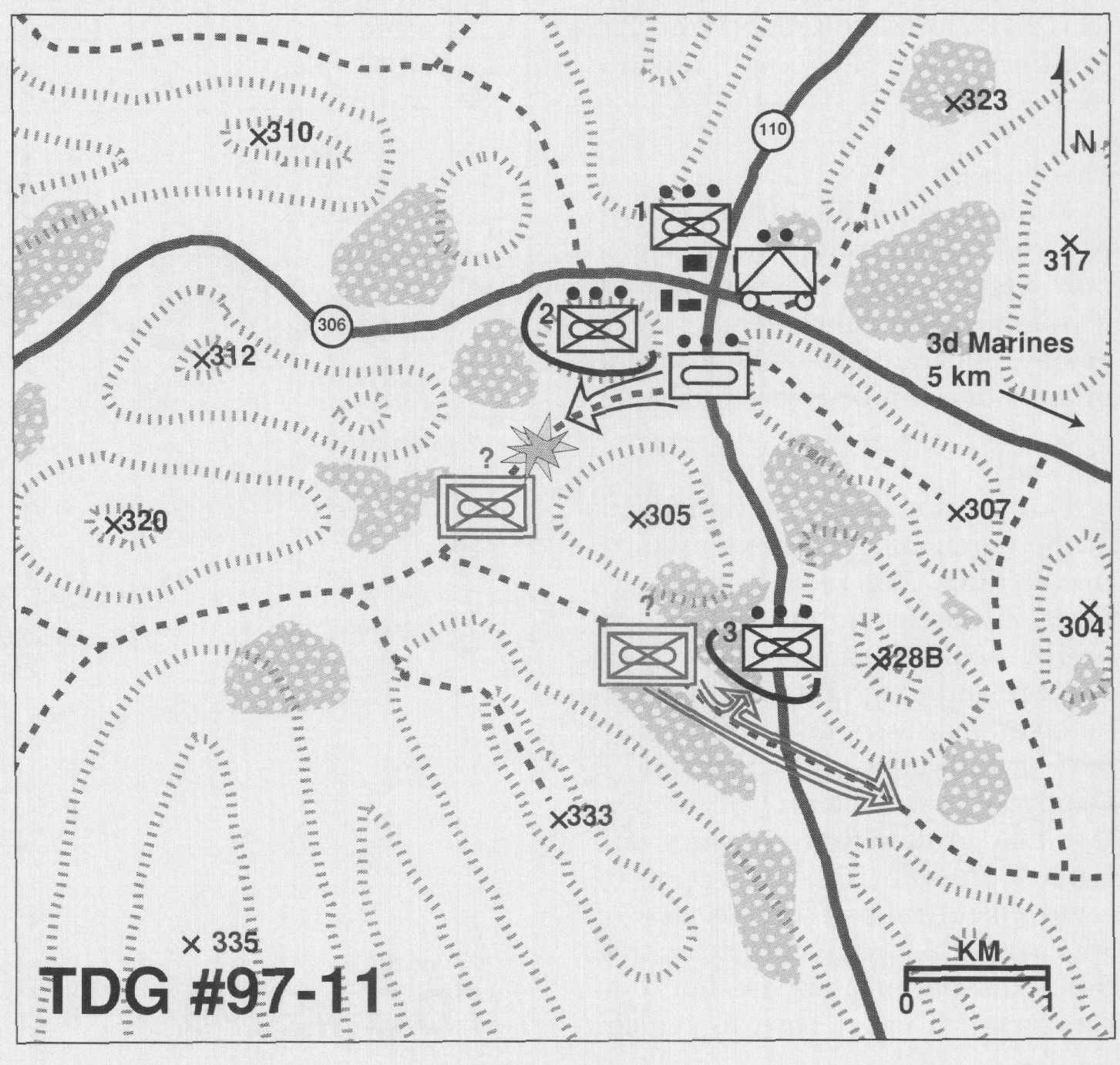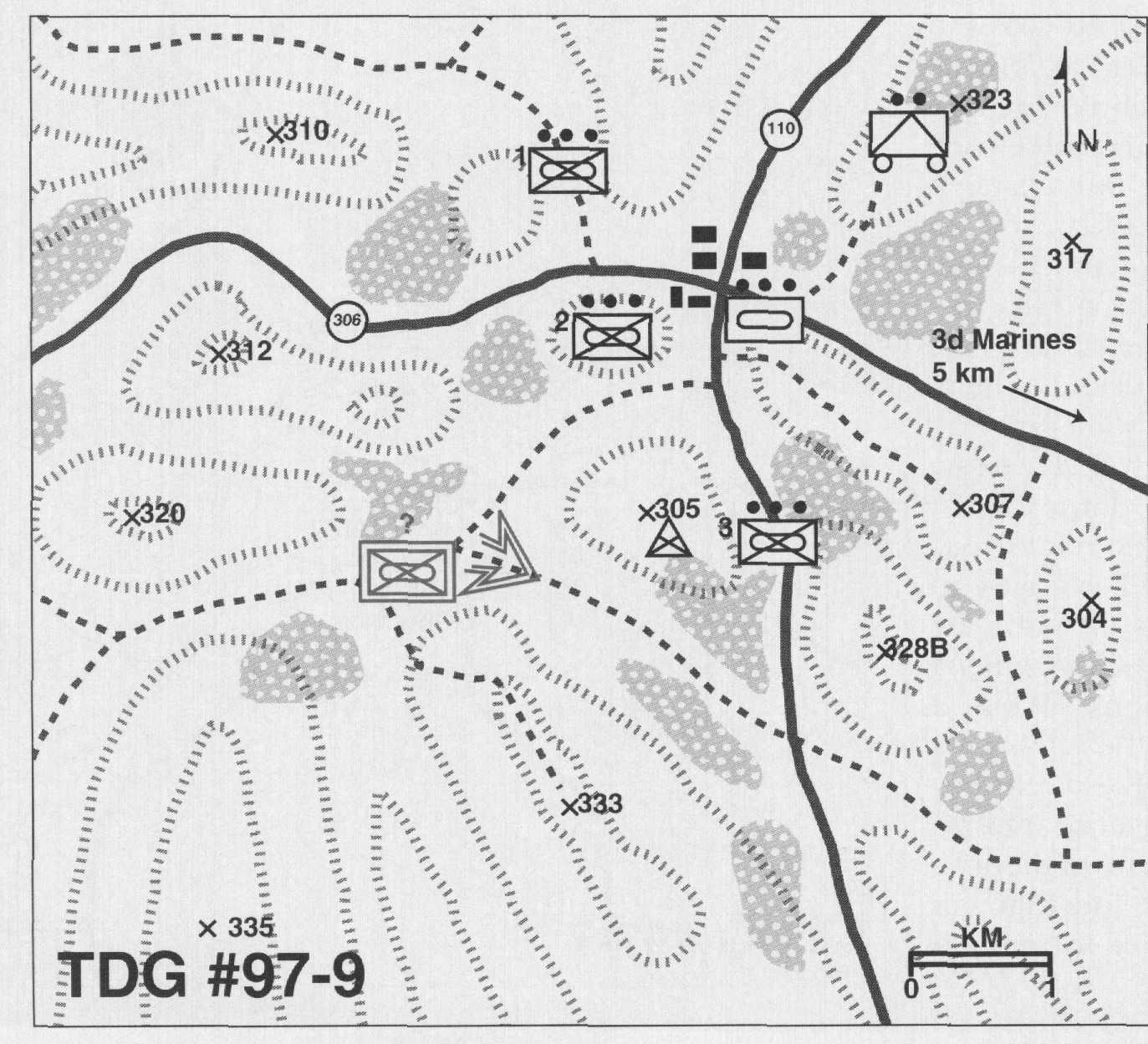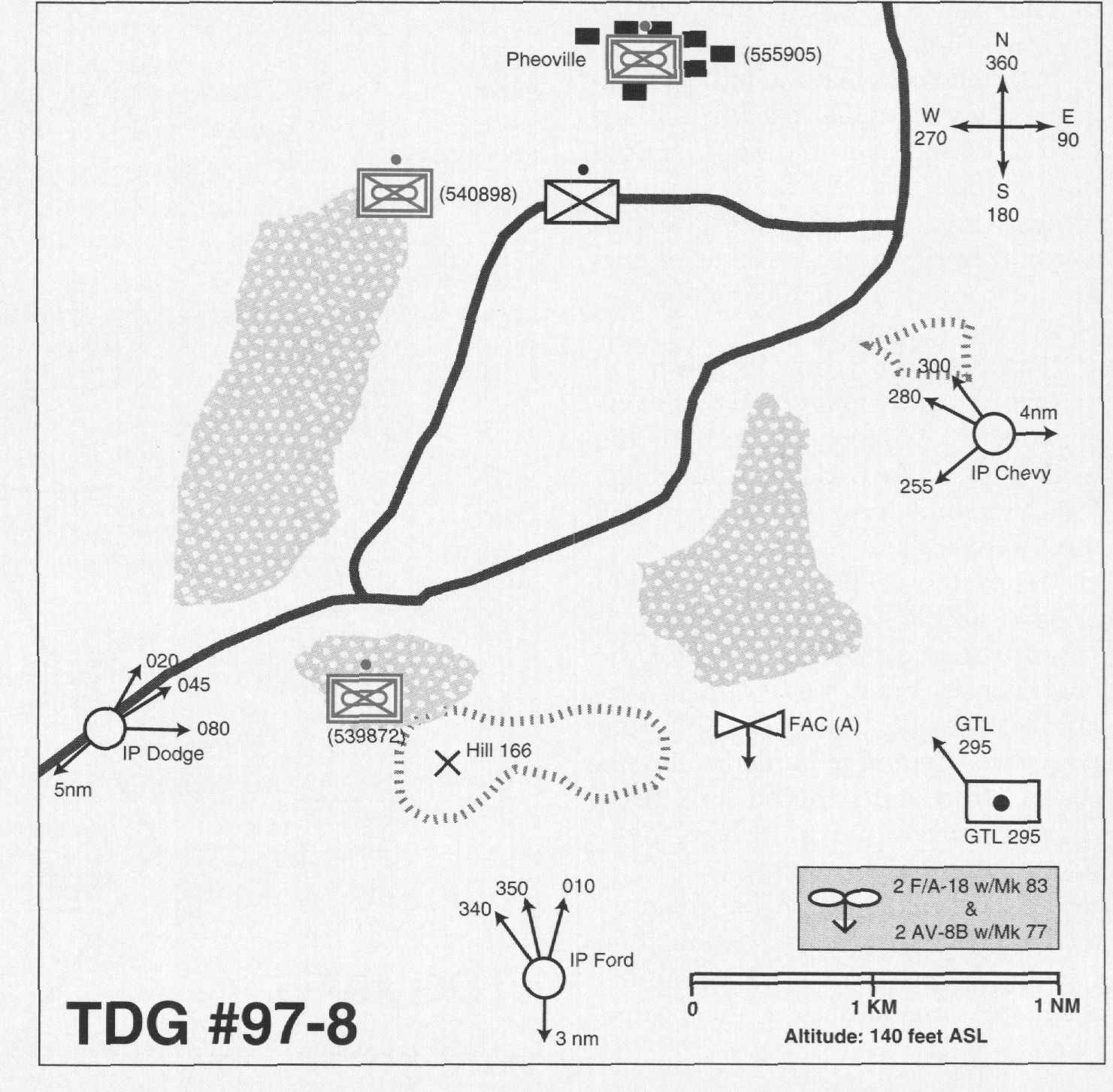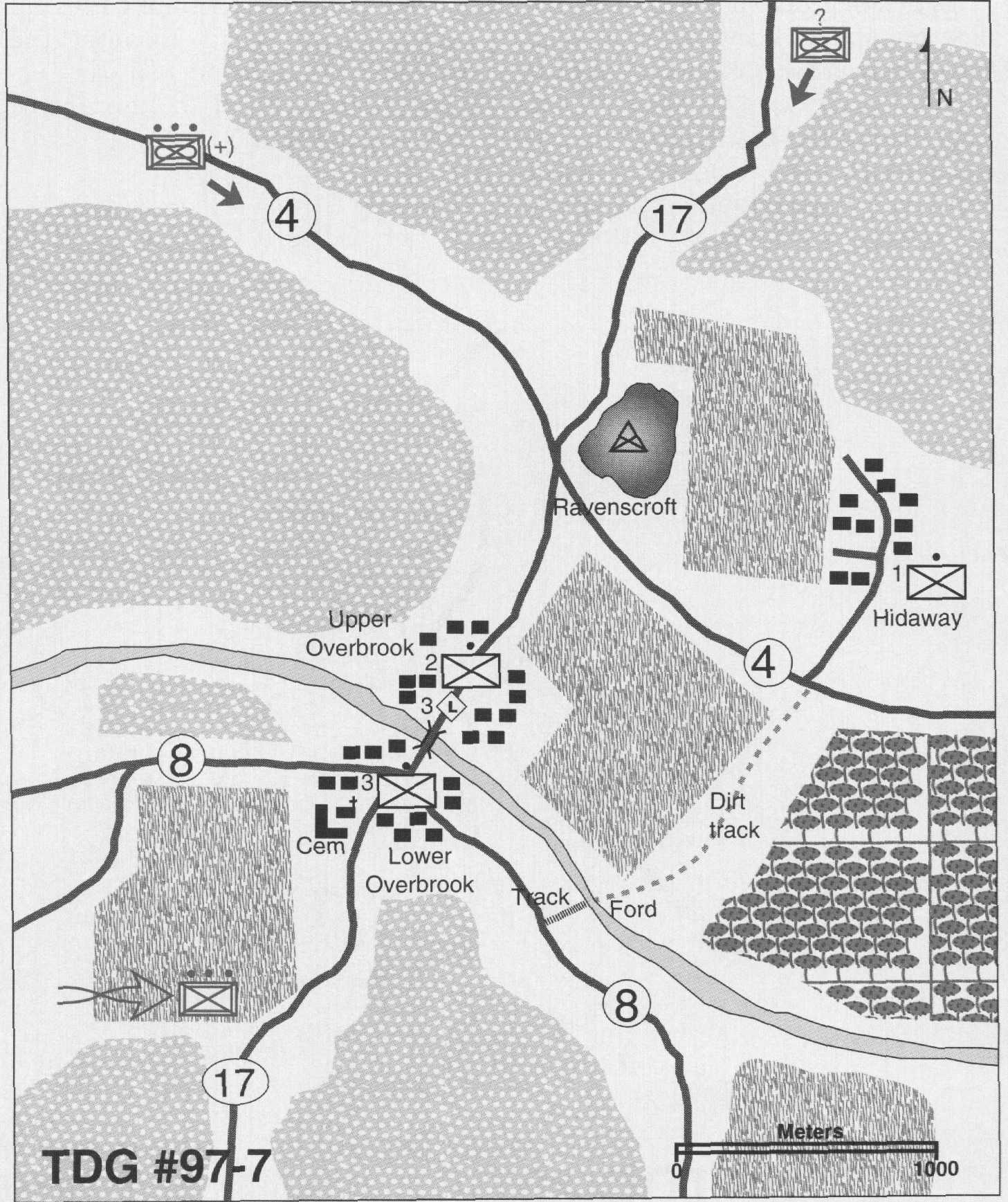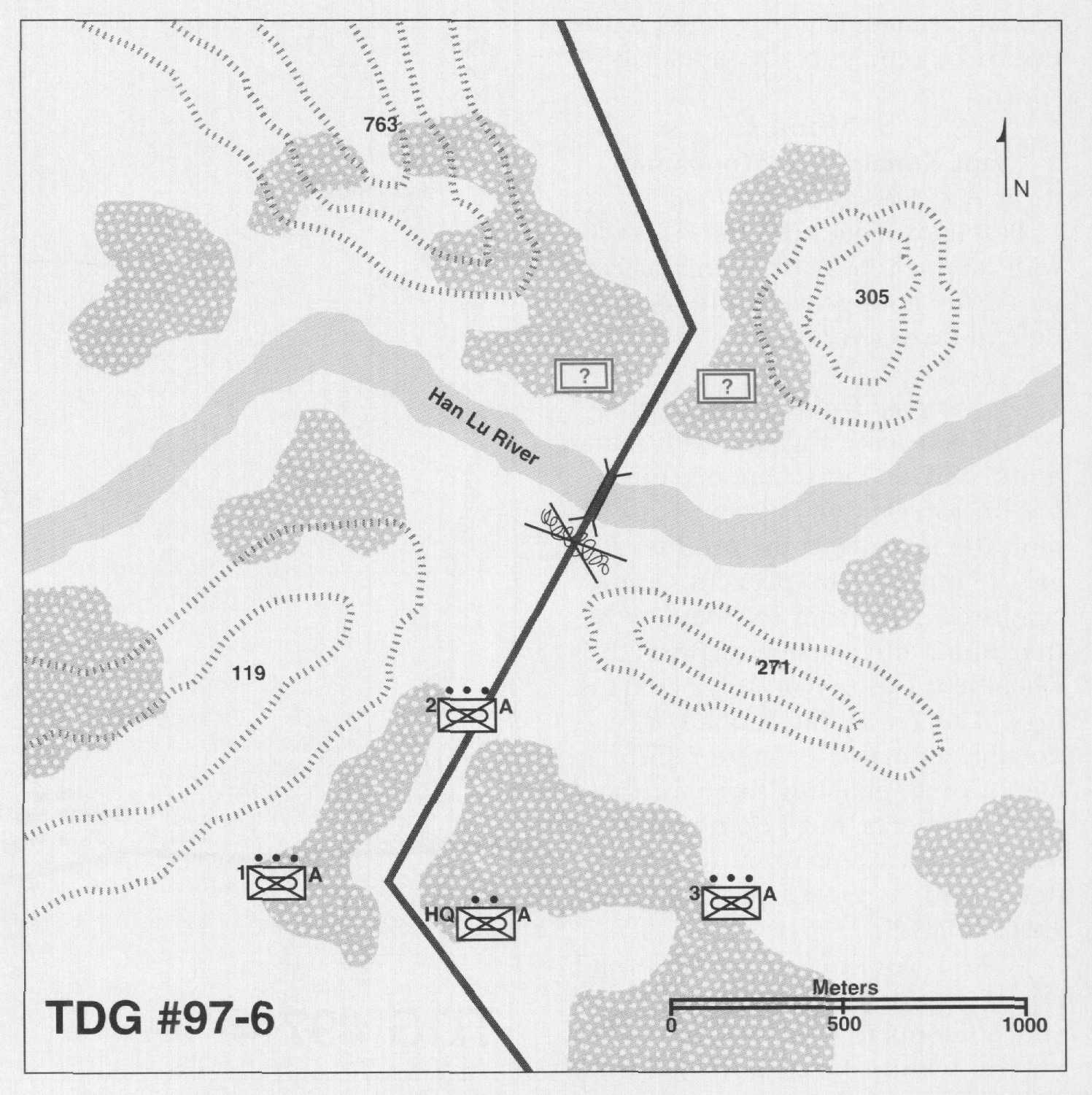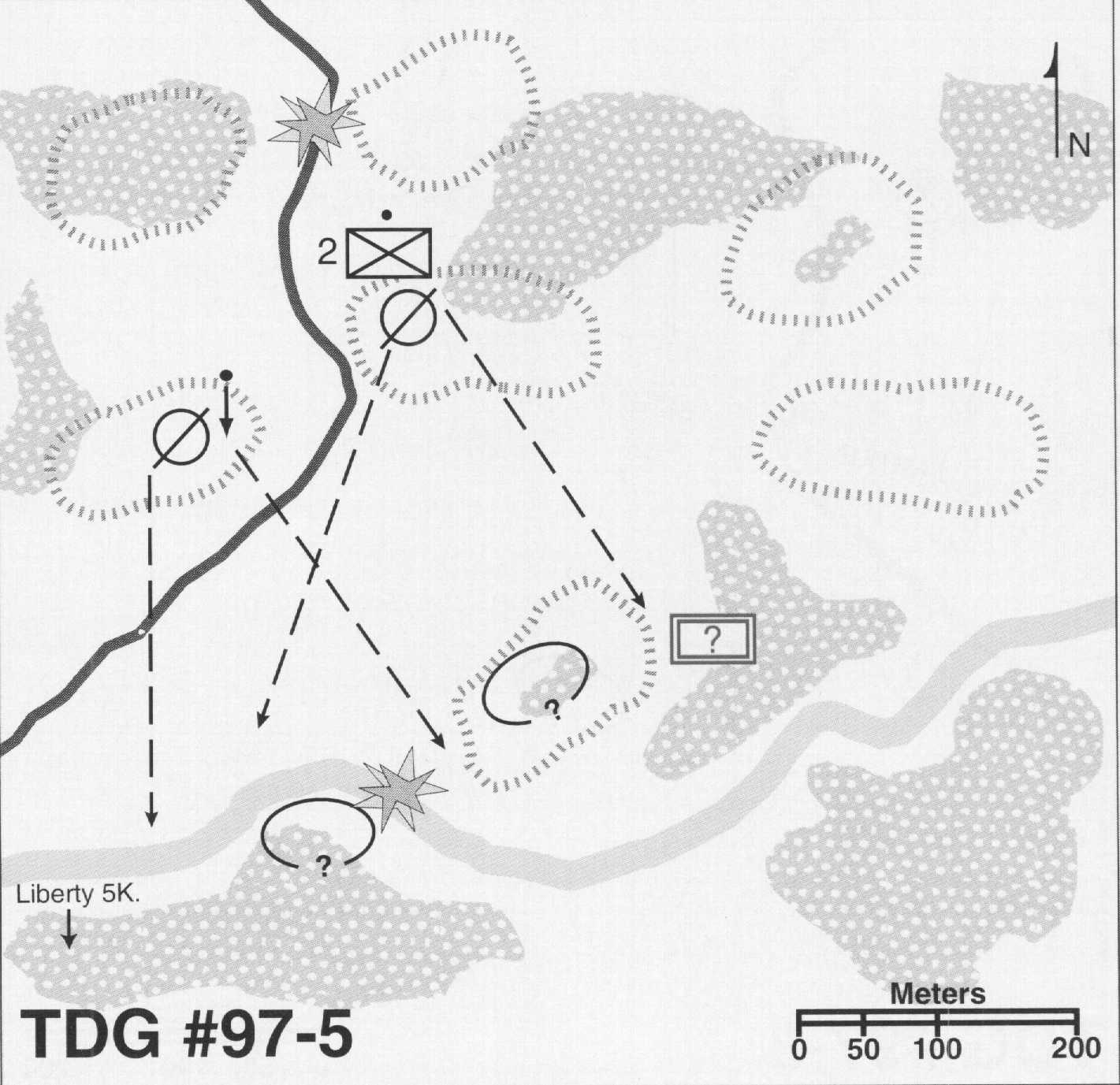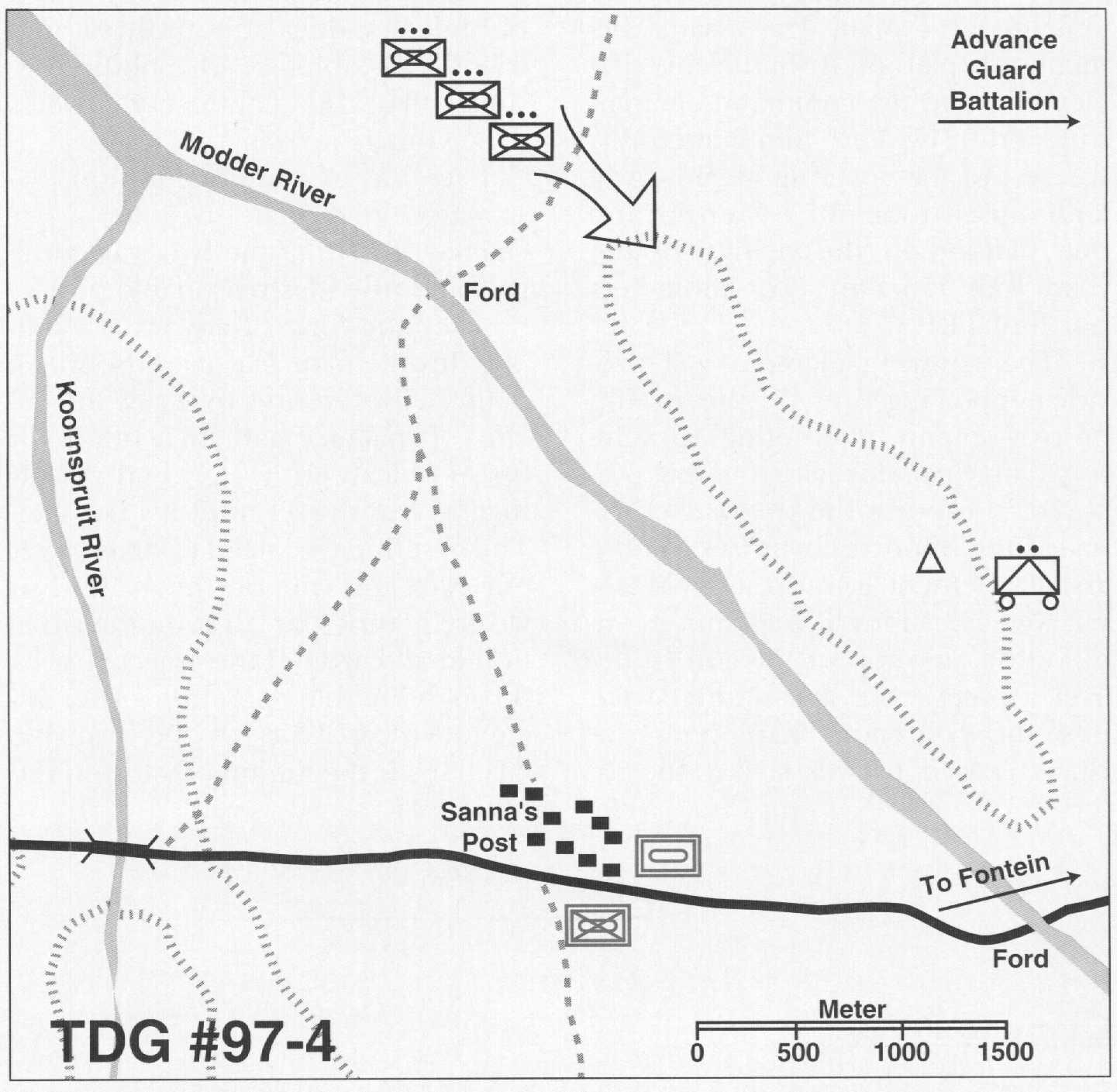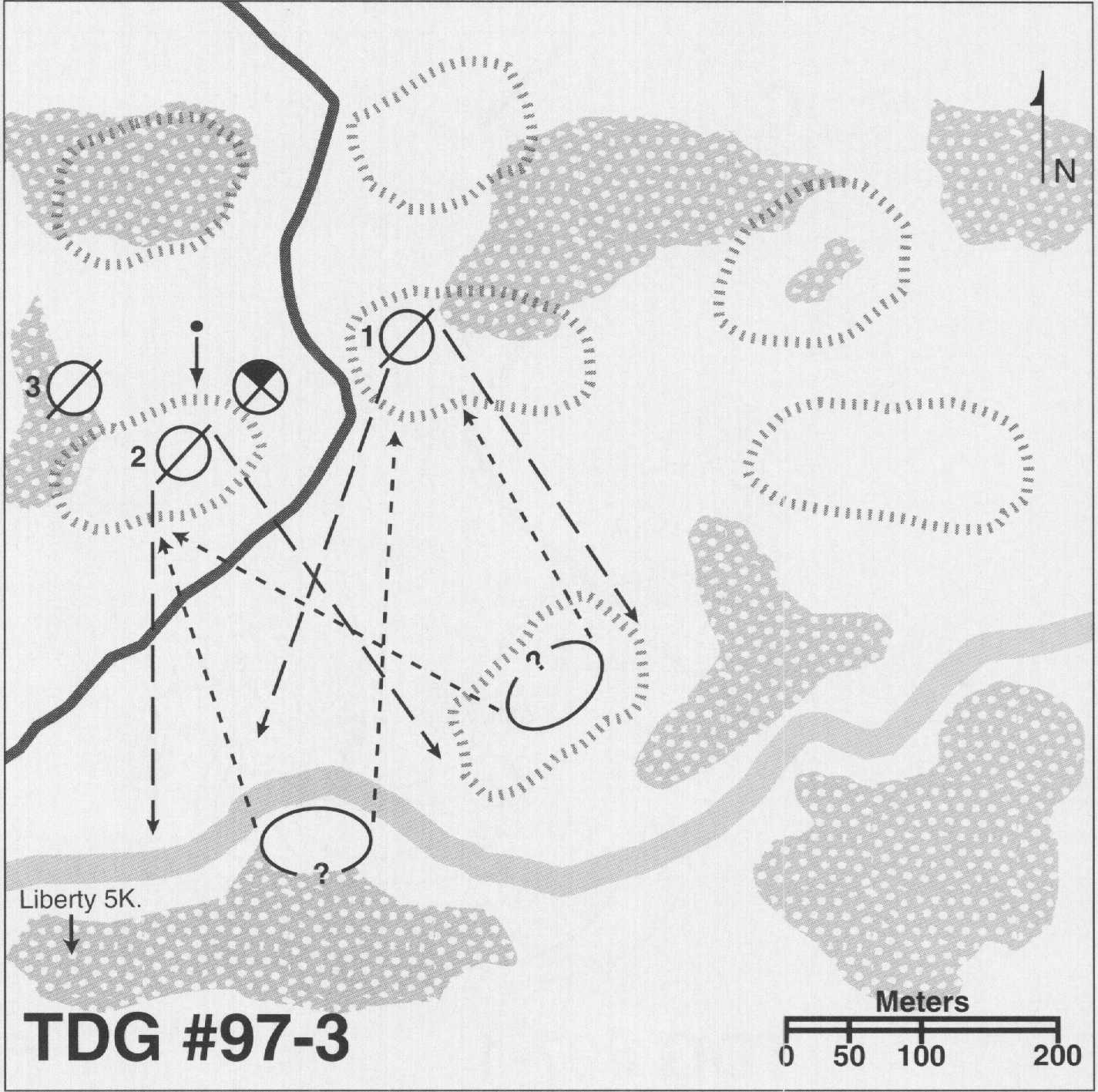By Maj John F. Schmitt, USMCR
This scenario is roughly the reverse of Tactical Decision Game #979, “Clash at Timpan-ni, the solutions to which were published in MCG, Nov97. Does having seen the situation through the enemy’s eyes influence your decision?
Situation
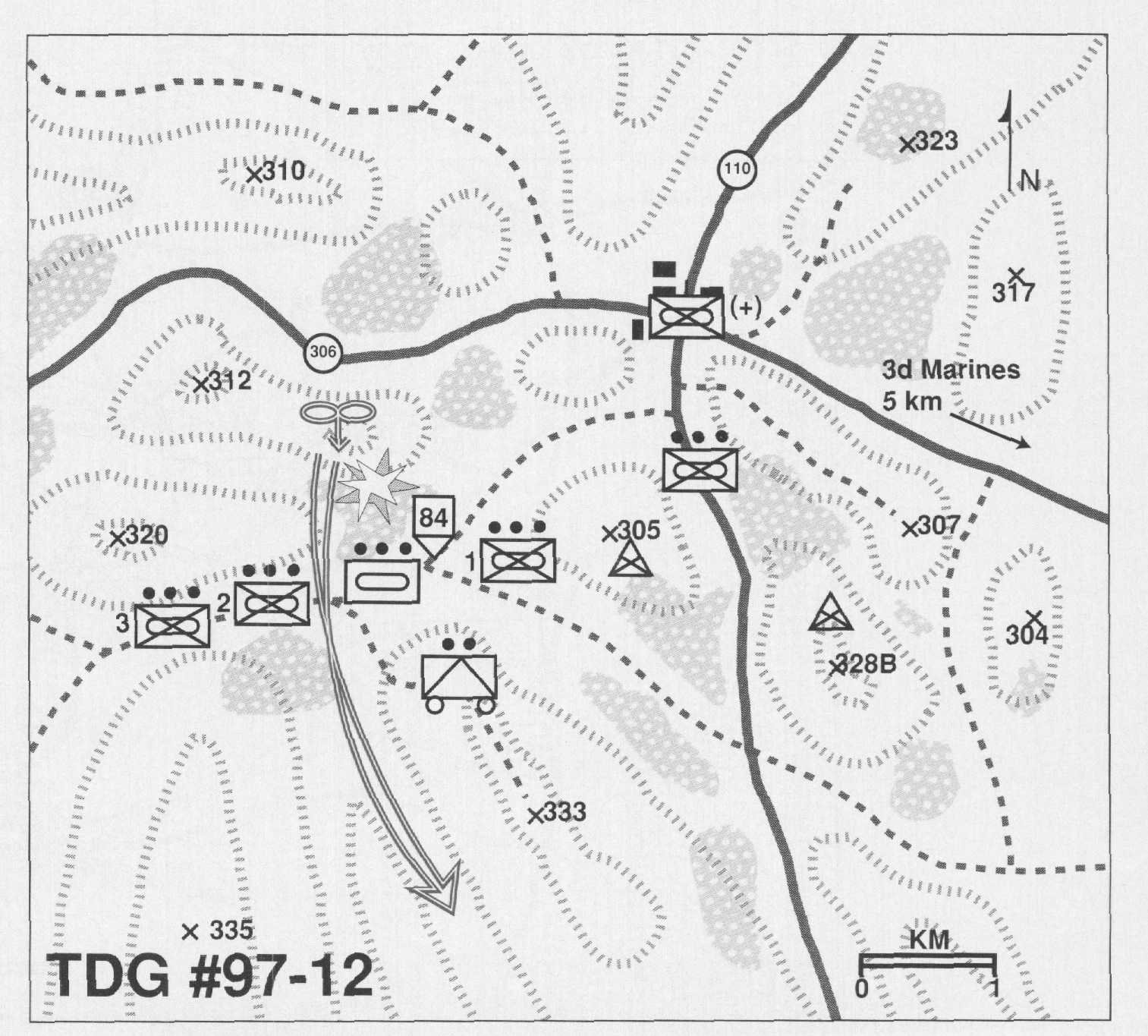 You are a rifle company commander in 1st Marines. You are operating in rugged, broken terrain spotted with sparse vegetation. Line of sight is rarely more than a kilometer. Vehicle movement is restricted to the roads and tracks, although the vegetation and small hills are generally not a problem for infantry. The enemy is a tough infantry force reinforced with tank and mechanized support.
You are a rifle company commander in 1st Marines. You are operating in rugged, broken terrain spotted with sparse vegetation. Line of sight is rarely more than a kilometer. Vehicle movement is restricted to the roads and tracks, although the vegetation and small hills are generally not a problem for infantry. The enemy is a tough infantry force reinforced with tank and mechanized support.
Intelligence indicates that the enemy is beginning to advance north in division strength; his main axis seems to follow the Jho Valley east of Rte. 110. Your regiment has been tasked to infiltrate south and then east generally along Rte. 306 in order to launch a spoiling attack into the enemy’s left flank. As the lead company of the advance guard battalion, you have been instructed to avoid detection as long as possible but to develop the situation quickly and aggressively once detected. You have been reinforced with a tank platoon, assault amphibious vehicle platoon (AAV), TOW section, and Dragon section (which you have distributed throughout the rifle platoons). Rte. 110 is a two-lane paved road; Rte. 306 is a gravel road; they are the only improved roads in the area, although the freezing temperatures have kept the unimproved routes trafficable for heavy vehicles.
Bad weather seems to have grounded the planned Cobra support, so you advance cautiously, staying off the main road to avoid detection. As you approach Checkpoint 84, the fork intersection west of Rte. 110, your forward air controller (FAC) tells you your Cobra section (“Trapper”) is airborne and will be on station within 10 minutes. You tell him to put Trapper on the company tac net. Then battalion halts you with an urgent message. You are put in touch with a reconnaissance team located near Hill 328B (you had no idea it was operating in the area) which reports:
An enemy mech company passed us about 20 mikes ago, heading north on 110 toward Timpan-ni. Estimate about 15 tracks, 5 tanks, 8-10 light vehicles. At present, we can only see the rear element, a mech platoon that is now halted off the road east of Hill 305.
You ask if the team has called for fire on the enemy column and the team leader reports that he has submitted several requests but received no fire missions. Just then, you hear .50 caliber fire up ahead. Simultaneously, a pair of enemy attack helicopters passes overhead from north to south. A Stinger shot sends them ducking for cover. They were visible for several seconds, and you wonder how much they were able to see. Your 1st Platoon then reports it has chased an enemy observation post off of Hill 305 and is sending a squad to investigate. The reconnaissance team now reports: “Something’s happening. That mech platoon’s coming to life.” Artillery starts to impact in the woods to your north. What now, captain?
Requirement
In a time limit of 5 minutes, decide what you do by issuing any orders, reports or requests. Then provide a sketch and a brief explanation of your decision. Send your solution to Marine Corps Gazette, TDG #97-12, P.O. Box 1775, Quantico, VA 22134 or fax 703-640-6161.


